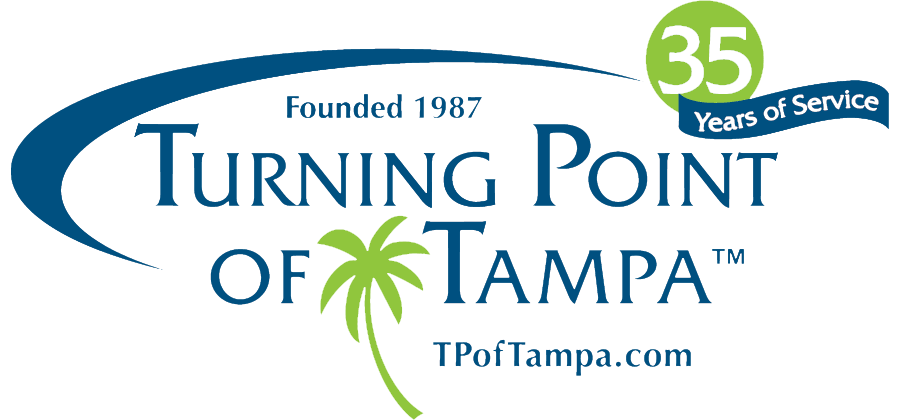OxyContin addiction can negatively impact many areas of your life. If left untreated, it’s a life-threatening addiction requiring careful treatment and withdrawal management.
If you are looking for help on the road to full addiction recovery, know that it is within reach. At Turning Point of Tampa, we believe in a holistic, multidisciplinary approach to oxycontin addiction.
We pride ourselves on our safe OxyContin detox protocols. In both our detox and residential drug abuse treatment program, you can look forward to finding recovery from your opioid addiction.
We commit ourselves to getting you a step closer to recovery from your substance use disorder. Find out more about OxyContin detox, addiction and withdrawal symptoms to look out for, and our unique approach to addiction treatment.
What Is OxyContin?
OxyContin is an opioid medication used to treat chronic pain. It’s a pain medication for moderate to severe pain relief, indicated for patients with chronic illnesses like cancer and degenerative bone disorders.
OxyContin works by binding with nociceptors. Nociceptors are otherwise known as pain receptors. By binding with pain receptors, OxyContin and other opioid drugs inhibit pain signals from reaching the brain, preventing the brain from processing the signals as pain. In short, OxyContin prevents pain signals from going to the brain. This results in a patient not experiencing pain or experiencing it in its less severe form.
OxyContin or its generic form oxycodone comes in both fast and extended-release forms. The extended-release form is the most commonly prescribed opioid for chronic pain due to its slow drug metabolism.
The drug’s ability to significantly reduce pain at the same dose for months makes it addictive. Recognizing this, many physicians prescribe OxyContin for shorter than three to four months. Unfortunately, those who have developed a reliance on the drug get drug cravings that force them to abuse OxyContin, procuring it however they can.
Do I Need To Undergo OxyContin Detox?
OxyContin is a brand of oxycodone, a group of potent pain medications used for severe pain. Like all opioid medications, OxyContin is accessible to patients only after a physician prescribes it to them. Not everyone who takes this pain medication needs detox.
Before undergoing an OxyContin addiction treatment program, you must determine whether or not you misuse OxyContin. If you were prescribed OxyContin, you may not necessarily be misusing or abusing the opioid. However, when you find yourself becoming more reliant on the drug’s effects, consider your dependence a red flag. Alongside your dependence, the following symptoms should prompt you to seek help immediately.
Physical Symptoms of OxyContin Addiction
OxyContin addiction’s early signs include a myriad of physical symptoms. Among these symptoms are the following:
- Signs of respiratory depression (slowed breathing)
- Low blood pressure
- Dilated pupils
- Sleepiness
- Weak and slow pulse
- Slow reaction time and reflexes
All of these symptoms are the result of depressed central nervous system (CNS) function. CNS depression causes many of the body’s essential functions — like breathing and circulation — to slow down. For this reason, abusing OxyContin is dangerous and can result in death.
Cognitive Symptoms of Addiction
Besides the physical signs and symptoms of addiction, cognitive symptoms can also arise due to opioid use disorder. Some of the uncomfortable symptoms experienced by patients include the following:
- Poor spatial awareness
- Impaired memory and focus
- Difficulties in concentration and balance
The above signs and symptoms of opioid use and dependence happen because of what happens to the CNS and brain chemistry. Opioid medications like OxyContin block pain signals. While this is beneficial for pain control, the blocked signals also result in depressed reactions as shown by problems with information processing. This is why patients experience problems with balance and focus.
Psychosocial Symptoms of OxyContin Addiction
Because of dependence, a patient abusing OxyContin can experience psychosocial symptoms associated with attempts to procure opioid medications. Some of the most common psychosocial signs of addiction include the following:
- Mood swings
- Anergia or a lack of energy
- Panic and anxiety
- Drug cravings
- Sudden and unexplained bouts of anger
The psychological signs of opioid dependence don’t differ much from those of other types of substance abuse disorders. These occur due to alterations in brain chemistry and physical dependency. The symptoms become worse when a lot of time has passed since the patient’s last dose of OxyContin. This is why sudden discontinuation of OxyContin isn’t advisable. Suddenly stopping OxyContin can result in uncomfortable symptoms of withdrawal.
What Are the Symptoms of OxyContin Withdrawal?
Opioid withdrawal symptoms follow sudden discontinuation after a patient has developed a physical dependence on opioid pain medications. The withdrawal signs are so severe that the experience often drives patients back to OxyContin abuse.
When left untreated, OxyContin withdrawal is potentially deadly.
Spotting the early signs of withdrawal is key to effective addiction management and detox.
The signs of withdrawal depend on which part of the OxyContin withdrawal timeline the patient is in. At the early stages — 24 to 96 hours after the last dose — patients can experience gastric and flu-like symptoms. Severe withdrawal symptoms peak after a week, escalating to severe muscle aches, itching, and intense cravings.
Other symptoms include the following:
- Agitation
- Overstimulation
- Weakness
- Insomnia
In general, withdrawal symptoms level off and subside after 14 days. A recovering patient can expect the OxyContin detox process to last this long if not longer.
What Does the OxyContin Detox Process Look Like?
At Turning Point of Tampa, the detox process involves a thorough assessment and the management of withdrawal symptoms. The process begins upon admission. The detoxification is most often followed up with residential addiction treatment on our campus.
Drug Abuse Assessment and Health History
The assessment begins many times on over the phone. Our admissions team can get the basic information to speed the process up once you arrive.
Every patient must see our nurse to go over a complete medical history when arriving at the Turning Point of Tampa addiction treatment facility. Our health care providers conduct a thorough physical assessment and metal health health history as well to determine the severity and extent of opioid withdrawal and addiction.
Turning Point of Tamps offers personalized detox and addiction treatment to patients based on the findings of the assessment and health history. We understand that each person is different and we write a unique and individualized treatment plan for each person.
Managing Withdrawal Symptoms
During the first few days of detox, a patient will be missing their dose of OxyContin. With OxyContin absent in their systems, patients will experience withdrawal symptoms.
The early symptoms of withdrawal include stomach pain and flu-like symptoms (e.g., fever, runny nose, and chills). These early symptoms occur for a few days and peak after a week. After a week, some patients can experience moderate to severe pain in the joints, bones, and muscles.
Opioid Withdrawal
Opioid withdrawal symptoms are uncomfortable for most patients, but they subside. The first few days of oxycontin withdrawal, severe withdrawal symptoms can occur. This few days is why it is so important to be under the care of doctors and a medical team that understands managing withdrawal symptoms.
In our inpatient medical detox, our goal is to help lessen the experience of withdrawal symptoms as much as possible. Nurses will take temperature and blood pressure regularly and visually do regular physical monitoring.
When the withdrawal stage passes, patients will report feeling less pain and anxiety. Treatment doesn’t stop when the pain does. Instead, detox and substance abuse treatment are continued to to insure a successful treatment with long term recovery.
In-patient Residential Treatment
The symptoms of OxyContin withdrawal also include psychological dependence on prescription opioids. For this reason, Turning Point of Tampa provides various treatment options to address opioid dependence.
Our single campus allows patients to go through a continuum of care within our model. From going through the medical detox in our oxycontin detox program, to living drug free and participating in residential treatment and intensive outpatient treatment.
Psychotherapy is one of the treatments patients can expect. Licensed medical professionals, therapists and counselors conduct therapy and counseling sessions as part of the treatment plan. Patients have one-on-one therapy and counseling sessions as well as facilitated groups where patients can open up about their OxyContin misuse and drug addiction.
As patients develop more awareness about their drug addiction, Turning Point of Tampa introduces other forms of therapy. These forms of therapy are group-based, ranging from support groups to family therapy.
During group therapy, recovering patients can share their struggles in the presence of like-minded individuals who are also battling excessive opioid use.
Outpatient Treatment Program
After undergoing in-patient management, our medical professionals and clinical team will assess a patient’s progress. Based on the needs of the individual, the team will then discharge the patient from in-patient care and shift them to an outpatient program. The outpatient program involves continued therapy and relapse prevention.
At Turning Point of Tampa, we offer outpatient treatment as part of our continuing care model for recovering patients. Our care model allows patients to continue their journey of recovery and live on our campus and eventually return home and stay involved until discharge.
Turning Point of Tampa’s Integrated 12-step Approach
At Turning Point of Tampa, we take pride in our holistic and alternative approach to addiction treatment. We utilize the tried-and-tested 12-step approach used by Alcoholics Anonymous and Narcotics Anonymous.
The 12-step program begins with a recovering patient recognizing their powerlessness over OxyContin addiction. From here, we take a recovering patient through various modes of therapy geared to prevent relapse and lead a patient to drug addiction recovery.
Our program is both psychologically and spiritually uplifting and reinforcing. Our program’s effectiveness follows standards from American Society of Addiction Medicine (ASAM). We utilize best practices outlined by the National Institute on Drug Abuse, the National Institute on Alcohol Abuse and Alcoholism, and the Substance Abuse and Mental Health Services Administration (SAMHSA).
Seek Help and Take Control of Your Life
Recovering from OxyContin addiction and OxyContin withdrawal is possible.
At Turning Point of Tampa, we are here to support you throughout your recovery. If you need a place for addiction treatment and are ready to learn about an oxycontin detox, please call us. Let us help you turn your life around as you recover from opioid addiction.
Resources:
https://medlineplus.gov/ency/article/007489.htm
https://www.webmd.com/drugs/2/drug-2798/oxycontin-oral/details
https://www.rxlist.com/oxycontin-drug.htm






